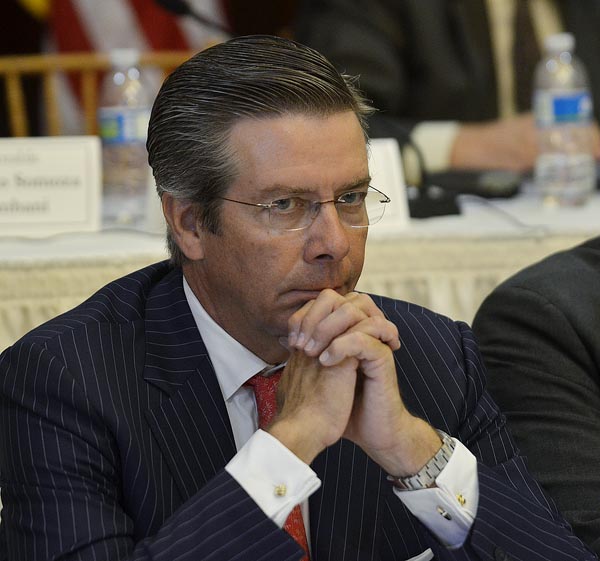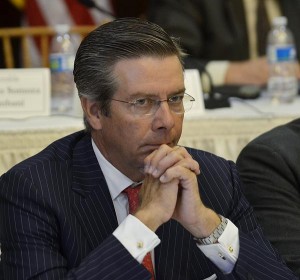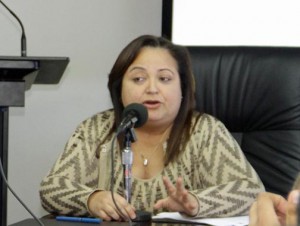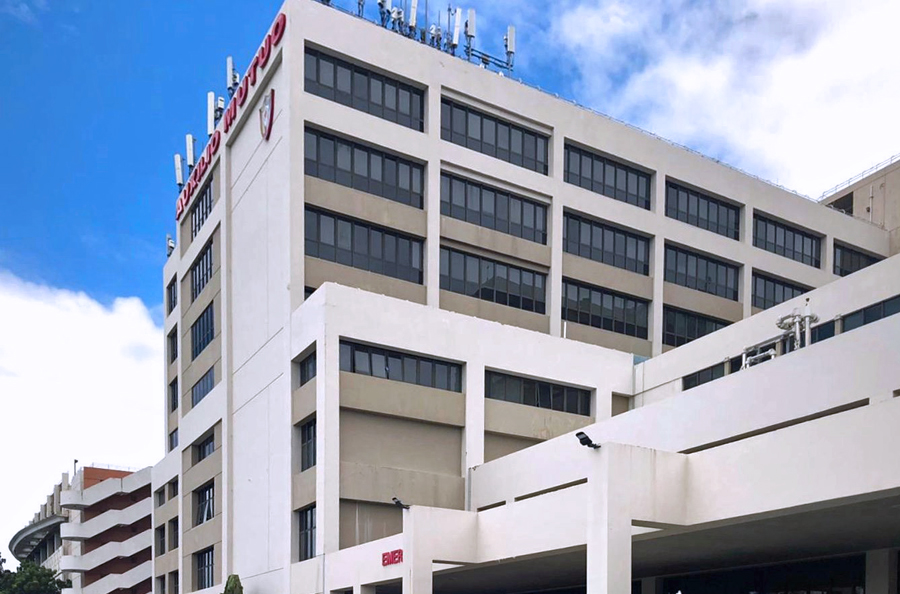Puerto Rico gov’t projects 17% revenue growth in FY ’14

Puerto Rico government officials told investors Tuesday that the Commonwealth’s Fiscal 2014 General Fund budget revenue will grow by $1.7 billion, or 17 percent, largely due to new tax measures, amendments to Law 154 and an expansion of the Sales and Use Tax (IVU, as it is known in Spanish) base.
During an afternoon webcast, the administration’s economic team provided an update on the government’s fiscal and economic development progress, which also included an update on the GDB’s financial health, and a five-year plan “for achieving a more diversified, knowledge-driven economy.”
The extensive presentation was prefaced by a message from Gov. Alejandro García-Padilla, who told investors connected online that the government “is going to do everything necessary for Puerto Rico to honor all of its commitments,” referring to existing loan and bond obligations.
The Commonwealth’s approved budget for fiscal year 2014 was designed to reduce the budget deficit from $2.37 billion in FY2012, and a projected $1.29 billion in FY2013, to $820 million in FY2014, by enhancing and diversifying the government’s revenue base, including an increase in the Law 154 excise tax to 4 percent, and by reducing the government’s reliance on debt service restructuring, said GDB Chairman David Chafey.
The government’s General Fund budgets for FY 2013 and FY 2014 include a debt service restructuring of $775 million ($600 million in General Obligation and $175 million in Public Building Authority bonds) and $575 million (in GOs), respectively.
“For the first time since FY 2009, there will be no PBA debt service restructuring in FY 2014. Our plan is to significantly reduce debt service restructuring for FY 2015 and eliminate the practice by FY 2016,” Chafey said, noting that the government is looking end the “scoop and toss” practice of borrowing and refunding by 2016.
The next steps in the Commonwealth’s fiscal plan include Teachers Retirement System reform and further deficit reduction, with the goal of a balanced budget by no later than FY 2016.
Officials said legislation will be submitted by year’s end to address the funding problem at the Teacher’s Retirement System, which is already ruffling feathers among educators who fear they will lose benefits as a result.
“Before the end of the calendar year, we will present legislation to reform our teacher’s pension system to ensure that the system does not run out of assets and pension benefits can be paid when due,” Chafey said.
Meanwhile, the economic team that included Interim GDB President José Pagán-Beauchamp, Treasury Secretary Melba Acosta-Febo, Office of Management and Budget Executive Director Carlos Rivas, Economic Development and Commerce Secretary Alberto Bacó, Antonio Medina, Executive Director of the Puerto Rico Industrial Development Company, and José Coleman-Tió, executive vice president and general counsel of the GDB.
During the presentation, Chafey said steps have been taken to turn public corporations — the Puerto Rico Aqueduct and Sewer Authority, the Puerto Rico Electric Power Authority, and the Ports Authority, into self-sufficient entities capable of operating without the need for budgetary subsidies or operational loans from the GDB in FY 2014.
Furthermore, he said the GDB projects it will have the liquidity necessary to fund the Commonwealth’s needs through the end of FY 2014.
“Based on this, the GDB and the Commonwealth can choose not to access the capital markets during FY 2014,” he said.
GDB’s capital markets plan for the remainder of the current calendar year includes between $500 million and $1.2 billion of debt, subject to market conditions. The Commonwealth and the GDB have the financial flexibility to adjust the financing plan and transaction calendar as necessary, he said.
COFINA and the future
With the enactment of Law 116 of this year 2013, the IVU percentage allocated to COFINA has been increased from 2.75 percent to 3.50 percent, increasing Puerto Rico’s financing capacity.
COFINA’s credit is bolstered by strong legal protections for bondholders, including being secured by a stable stream of revenues not subject to “claw-back” by GO bondholders under the Puerto Rico Constitution.
“The Puerto Rico Justice Secretary and U.S.-based Bond Counsel have provided legal opinions for each COFINA transaction stating that the SUT is not subject to ‘claw-back,’ and will provide opinions for any new COFINA transactions,” Acosta said.
The presentation to investors included a description of the five-year economic plan developed by the Commonwealth, with the input of Boston Consulting Group, to support economic growth in the Commonwealth and enhance Puerto Rico’s position as a competitive business and investment destination, resulting in thousands of new jobs and sustainable, long-term economic growth.
Puerto Rico aims to create more than 90,000 jobs and $6 billion to $7 billion in incremental GDP by the beginning of 2016 and more than 130,000 jobs and $10 billion to $12 billion in incremental GDP by the beginning of 2018.
The Commonwealth is focused on developing it’s positioning in five priority sectors: life sciences, knowledge services, tourism, small and medium enterprises, and agriculture.
Collaboration with feds
In response to an investor question, Acosta addressed the issue of the collaboration between the García-Padilla administration and federal government agencies, saying she had no information about any potential rescue program for the island.
“We have a working collaboration between the Puerto Rico government and the federal government, which has been going on since this administration took over in January,” she said. “We have held recurring meetings with various offices of the executive branch, the Treasury Department and the White House, specifically the President’s Task Force on Puerto Rico.”
“We have no information regarding plans to buy bonds or provide us with a financing alternative,” she said.
In recent weeks, word has been swirling about the possibility of a federal “rescue” package from the U.S. Treasury to help Puerto Rico address its burgeoning debt.













